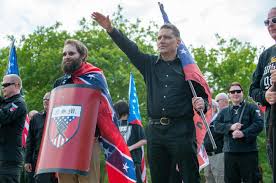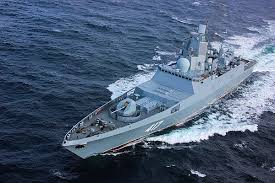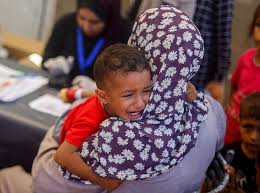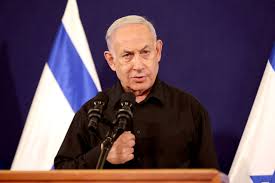F.P. Report
WASHINGTON: During a press briefing, Pentagon Press Secretary John F. Kirby I want to start the briefing by asking Ms. Lynn Rosenthal to come up and back-brief you. I think you all know that the work of the Independent Review Commission on Sexual Assault has completed — they have submitted that report, and the Secretary has made his recommendations to the President. I think you also saw the President’s statement as well on these recommendations.
And we posted a report on our website, we posted the secretary’s directive to the Department as well for all these, hopefully you’ve seen that by now. But I thought it was important for you to get a chance to talk to Ms. Rosenthal herself about their work, the scope of what they covered, and the recommendations that they made to the Department.
Lynn Rosenthal said that I’m joined by Brigadier General Retired Jim Schwenk who was one of our legal experts on the IRC and is here to help answer questions. As I stand here today I’m remembering when we announced this effort, and when the secretary stood up the IRC.
She said that I said on that day that in reading stories from victims of sexual assault, I noted that they often felt that the purpose of the sexual assault was to make them feel like they didn’t belong in the military, that they were someone who shouldn’t be there. And I said on that day that this IRC was about ensuring them that they do belong in this military.
I must say that that finding — or my initial impressions held true throughout our process — that the purpose of sexual assault and harassment is often to make someone feel like they don’t belong. And you’ll hear that as a recurring theme in our recommendations.
The IRC has completed our work and delivered our recommendations to Secretary Austin. I want to recognize the leadership of the Secretary and President Biden in their commitment to ending sexual assault in the military. And I also want to thank General Milley, Chairman of the Joint Chief of Staff for his engagement in this process.
And I want to acknowledge the support and cooperation of service leaders, we very much appreciated their willingness to come to the table and to have a dialogue, even when they didn’t agree with some of our recommendations.
I want to give you a guide to the report, I’m sure you haven’t had a chance to read it, it’s 299 pages. So I want to tell you what you’re looking at. There is a short overview that highlights our recommendations, there’s a longer summary report that details our findings, and then there are four reports from each line of effort.
So there’s a line of effort one on accountability, two on prevention, three on climate and culture, and four on victim care and support. So as much as I would love for you to read all 300 pages, you also could go directly to that report for that line of effort and you would find everything you need there. And in fact, with some of your questions I’ll refer you directly to the report.
As a part of our process, we met with over 600 individuals including survivors, researchers, current and former service members, commanders, junior and senior enlisted members, and advocates working against sexual assault.
I want to begin by reminding all of us about the scope of the problem, 20,000 service members experience sexual assault every year. Less than 8,000 report those sexual assaults, less than 5,000 of those are unrestricted reports meaning that the victim has said that he or she wants a full investigation.
And only a tiny fraction of those end up with any kind of action at all in the military justice system, so that’s the chasm that we’re talking about. And in fact, that chasm about — between the scope of the problem and the actions that are taken mirrors the chasm that we found between what senior leaders say about this problem, and what junior enlisted members experience at the unit level.
For decades service leaders have said that there is no tolerance for sexual assault, but in practice, all too often there is nothing put tolerance. As one senior enlisted officer told us in our listening sessions, zero tolerance actually means 100-percent tolerance. This has resulted in broken trust between junior enlisted members and their commanders.
We also found that the military justice system is not well equipped to handle sensitive crimes like sexual assault and domestic violence — these crimes are interpersonal in nature and have the potential to be re-traumatizing for victims as their cases move forward. So they need specialized care and handling.
We note that there is a strong continuum between sexual harassment and sexual assault and that the connection between — and that there is a strong connection between unchecked sexual harassment when commanders take no action to address it, and poor unit climates.
We also found that the cyber domain can be as strong an influence on unit climate as real-time interactions, and that leaders are poorly equipped to deal with this ever-changing situation. And in fact, 30-percent of service women who experienced sexual harassment in the 2018 Workplace and Gender Relations assessment survey indicated that it took place online.
We found — and this is critical because it ties to many of our recommendations — that there are critical deficiencies in the workforce, including lack of expertise, across the board. This is a system that has operated for decades with inexperienced lawyers and investigators, collateral-duty victim advocates, and a near total lack of prevention specialists.
As just one example, there are thousands of collateral-duty victim advocates. And what that means is that they have another job. They may be a mechanic or a logistics specialist or something. And then they are often “volun told” to serve as their unit’s victim advocate, but their job and what they’re trained for is actually something quite different.
Now, I want to say that we met with many of these collateral-duty victim advocates, and their passion is there and their intent is there. But somebody who’s doing this as a — as a, sort of, part-time position without expertise and experience, although they receive training, is — this is not an appropriate way to respond to something as complicated as sexual assault. It’s not appropriate and we have recommendations to that effect.
When you ask senior leaders what we should do about sexual assault they almost uniformly say we have to get to the left of it, it’s about prevention. But they don’t really know what prevention is or how it’s different from response.
So as one sexual assault response coordinator told us, giving someone a water bottle with a hotline number on it is too late. It’s not prevention. We found that prevention and response are often conflated.
We also found that outdated social and gender norms contribute to a culture of hostility toward women in the services. And I would refer you to the LOE 3 report, which is quite detailed about this finding and it includes a stunning chart about what sometimes happens to women when they come into male dominated units. It is time for this to end.
And I should also say that we found in our meetings on installations, and with survivors, and with junior enlisted members that this hostility extends to anyone who is seen as the other, as I talked about before — who doesn’t belong. And for example, new RAND data tells us that gay men in the services experience sexual assault at nine times the rate of other men, nine times.
We found that victims carry a heavy burden when they experience sexual assault. And I should say that this finding was a bit of a surprise to me. I’ve worked on this issue for years and there’s been a lot of focus on trying to care for victims. But what we found are great deficiencies in that care.
Many cases are handled poorly with a near constantly shuffling of personnel — so that’s what I talked about before. For example, one survivor that we met with told us, over the course of her case she had two different prosecution teams, four different special victims counsel, and her victim advocate deployed right before the trial.
So this kind of workforce where there are constant changes of stations and constant moves — which is appropriate for the way that the military needs to operate in most cases — is not appropriate for addressing a complex problem like sexual assault.
Victims pay a high price for coming forward to report their assault. And again, this was a shocking and heartbreaking finding. Every survivor that we talked to had made — who had made an unrestricted report, which means it would be fully investigated, told us they regretted it, every one. Most told us that they had contemplated or attempted suicide.
And you know, it’s true for sexual assault victims, wherever we find sexual assault, that there is a high correlation with suicidal ideation. But what’s different in the military is that 24-hour nature of life.
If you’re sexually harassed or sexually assaulted, you can’t just leave. You can get — try to get your commander to follow protocol to have you transferred or to have the alleged offender transferred, but if that process isn’t working well, you can’t just leave because — in fact, it’s a crime for you to leave.
So what — we know it’s different. And we often hear from military leaders that sexual assault is a problem in the — in civilian problem society, and indeed it is, but it’s different here. And I say that as someone who’s worked with sexual assault victims on the civilian side.
It is different when you’re in a small unit. Where you live, eat, sleep, and play with the same people and then there’s an event and somebody’s assaulted. And people take sides.
And generally, because of rape myths and bias against victims, the side — their side is not the one that’s taken. And then they’re bullied, ostracized. And that’s when they start to feel suicidal, because they feel trapped and they have no way out.
I do want to say, we believe that we can change this. We — this is not a hopeless situation. To address these deficiencies, we’ve made 28 recommendations and 54 sub-recommendations. So I just want to give you a few of the highlights.
We’ve recommended shifting prosecution decisions to special victim prosecutors outside the chain of command. And we’ve, I think, talked about that before. There a detailed explanation of how we envision this could work in the LOE 1 report. And Jim Schwenk is also here to help answer questions.
When it comes to preventions, leaders are the linchpins of success but they have not been equipped to lead with key competencies rooted in primary science. So when they say prevention is the solution, we would say, yes, it’s the solution and there’s a science behind prevention. And leaders need to be equipped with that science.
You can learn all about that in the LOE 2 report, which in fact is a blueprint on exactly how the department and the services could implement a prevention workforce. This is an investment but we think it’s an investment work — worth making.
We’ve made a series of recommendations to improve unit climate, including better methods to select, develop, and evaluate leaders; enhance to the climate survey process, which I think we talked about here before; and greater transparency about disciplinary actions. The LOE 3 report will tell you much more about those.
We’ve made a series of recommendations addressing the handling of sexual assault and those cross over lines of effort. And we’ve made a series of recommendations to improve victim care and support, those dynamics I talked about earlier.
Those recommendations include shifting sexual assault coordinators and victim advocated out of the command structure, largely eliminating collateral-duty victim advocates — although you might need them in isolated deployed environments or on ships.
This kind of independent advocacy, where someone is 100-percent focused on the victim and reporting outside of the command structure, is a best practice. It’s what victims need, somebody 100-percent on their side.
At the same time, those sexual assault response coordinators and victim advocates should continue to serve as key advisors to commanders. So the command responsibility remains — taking care of their people, ensuring that victims are treated fairly, interrupting this pattern of bullying and ostracizing that victims often experience.
They’ll have on their team a victim advocate who’s independent of command but is still their key advisor. We believe this is critical and it mirrors the Fort Hood Report. When survivors are believed and cared for by commanders, it is lifesaving. We witnessed this and heard about it in our survivor interviews. It’s not even so much the actual outcome of the case but how the survivor was treated as the case moved forward.
Many survivors dream their whole life of serving in the military, and even after their sexual assault, most wanted to stay and do their jobs, but they need care, understanding and flexibility to do so, and they need to know that their commander has their back, and the recommendations in LOE 4 describe that in great detail.
Lastly, I wanted to just mention the need to highlight the response to domestic violence. Domestic violence and sexual assault are integrally tied together. 30-percent of — of active duty women have experienced violence from an intimate partner. That often includes sexual violence. And when sexual violence occurs in a domestic violence relationship, it is an indicator of increased lethality. So we need to be — take — paying attention to these two problems together.
I would just end by saying that commanders are essential to implementing all of these recommendations. Most importantly, commanders are the key to improving unit climates, changing the culture, protecting victims from negative consequences of reporting sexual assault.
And I want to say this clearly — the IRC rejects the notion that shifting legal decisions about charging someone with a crime or sending that case to trial diminishes the role of commanders. Instead, it enhances their role and places them in the lead of taking care of their people, which is their number one job, and creating climates of real no tolerance. That is their job.
Ms Rosenthal said that let me just give you an update on Afghanistan. Our mission in Afghanistan continues. We continue to execute a safe, orderly draw down in accordance with the President’s guidance for U.S. forces to be out of Afghanistan by the end of August.
The safe, orderly draw down enables us to maintain an ongoing diplomatic presence, support the Afghan people and the government, and prevent Afghanistan from once again becoming a safe haven for terrorism that threatens our homeland.
As part of our ongoing draw down process, the Secretary approved a plan today to transfer command authority over our mission in Afghanistan from General Scott Miller to General Frank McKenzie. We expect that transfer to be effective later this month.
General Miller will remain in theater in coming weeks to prepare for and to complete the turnover of these duties and responsibilities to General McKenzie. Importantly, General McKenzie will retain all existing authorities as Commander of U.S. Forces in Afghanistan. He will continue to exercise authority over the conduct of any and all counterterrorism operations needed to protect the homeland from threats emanating out of Afghanistan.
And he will lead U.S. efforts to develop options for the logistical, financial and technical support to Afghan forces once our drawdown is complete. Now as part of this new arrangement, the Secretary also approved the establishment of U.S. Forces Afghanistan Forward, to be led by Navy Rear Admiral, Peter Vasely. Rear Admiral Vasely’s command will be based in Kabul and will supported by Brigadier General Curtis Buzzard, who will lead the Defense Security Management Office Afghanistan.
That office will be based in Qatar, and will administer funding support for the Afghan National Defense and Security Forces to include over the horizon aircraft maintenance support. This change in leadership structure and the turnover today of Bagram airbase to the Afghan National Defense and Security Forces are key milestones in our draw down process, reflecting a smaller U.S. force presence in Afghanistan.
That presence will remain focused on four things over the course of the coming period. One, protecting our diplomatic presence in the country. Two, supporting security requirements at Hamid Karzai International Airport. Three, continued advice and assistance to Afghan National Defense and Security Forces as appropriate. And four, supporting our counterterrorism efforts.
Now, again on schedule now, a different topic. Earlier today, Secretary Austin met with his excellency, Sirojiddin Muhriddin, Minister of Foreign Affairs of Tajikistan, to reaffirm our security — strategic security partnership and to discuss the evolving security situation in the Central Asia region.
Both leaders expressed their shared desire to continue close collaboration on issues such as counterterrorism, border security and defense institution capacity building, and they reiterated their commitment to further promote the goal of a durable political setting in Afghanistan. Moving to the European theater, Exercise Sea Breeze continues as scheduled in the Black Sea and is proving to be one of those successful iterations in terms of scope, building capability among NATO allies and partners, and demonstrating our collective commitment to security in this region.
This week our ships began the at sea phase of the exercise, rehearsing coordinated air, maritime, and land operations to build combined capability. The ships and aircraft are working together in international waters and airspace to refine multi-domain operations. Together with our partners and our allies we continue to be transparent and truthful about these operations, building trust and stability across Europe.
I’d also like to highlight the Women, Peace and Security Congressional report signed by President Biden on Tuesday, the report summarizes U.S. government progress in implementing the U.S. Women, Peace Security strategy. The report captures the important role of the Department of Defense in advancing gender equity and equality at home and abroad. As one of the world’s largest employers, the Department continues to make a concerted effort each year to model Women, Peace and Security by creating an enabling environment for women and gender minorities, both civilians and in uniform.
As the U.S. officially commits to participating in the Generation Equality Forum, DoD will build on our Women, Peace and Security initiatives to strengthen the linkages between gender equality and national security. And finally I am delighted to be able to announce that Secretary Austin will speak during Global Emergency Emergent — Emerging Technology Summit on July 13th. The summit hosted by the National Security Commission on artificial intelligence will also host Robert Work, former Deputy Secretary of Defense as a moderator.






